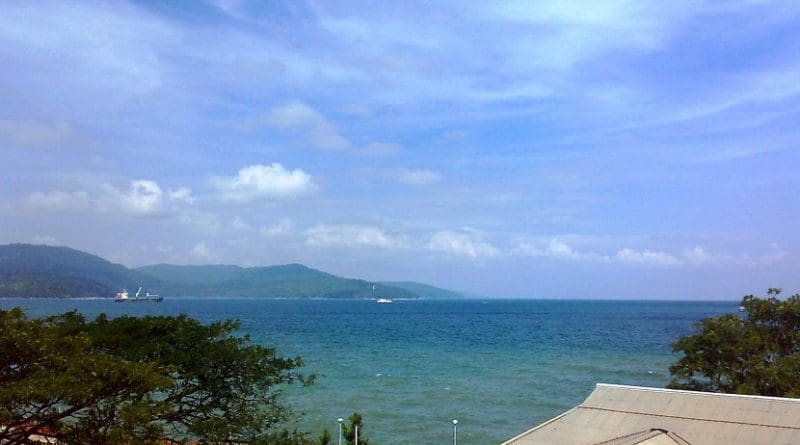Digital Connectivity In The Andaman And Nicobar Islands – Analysis
By IPCS
By Dr Vijay Sakhuja
The Indian government has awarded a contract for the installation of a 2,300 km-long optical fiber cable (OFC) across the Bay of Bengal between Chennai in the Indian mainland and Port Blair in the Andaman & Nicobar (A&N) islands. Announced in 2016, the primary purpose of the project is to support e-governance, e-commerce, education and socio-economic development in the A&N islands under ‘Digital India’, a flagship initiative announced by Prime Minister Modi to provide digital services across the country.
Bharat Sanchar Nigam Limited (BSNL), a public sector enterprise, and Japanese IT major NEC Technologies will implement the project, and will “manufacture the optical submarine cable and provide technical assistance during the turnkey implementation.” The Bay of Bengal OFC is capable of 100 Gb/s optical waves; it will also fan out and make landfall at Long Island, Rangat, Havelock, Hutbay in the Andaman group of islands, and Car Nicobar, Kamorta and Great Nicobar.
Although the information age has offered many opportunities, but little still is known about OFCs buried under the sea that carry terabits of information per second; nearly 100 per cent of all transoceanic phone calls, emails, text messages, banking information, and TV transmissions between continents are transmitted by OFCs at the speed of light. These have largely replaced satellites, microwave towers and copper phone wire.
OFCs also enable underwater sensors to transmit real time data for oceanographic research, pollution monitoring, offshore exploration, disaster prevention, littoral security, and military surveillance. Besides being an instant transmitter of data, it ensures high quality and transmission reliability. Although the primary purpose of the OFC in the A&N islands is to offer digital connectivity and ensure high efficiency in governance delivery, there are at least two other spinoffs that can support ocean monitoring and security.
First, ocean and seabed monitoring is a complex and technically challenging task. The process requires sensors placed at the bottom of the sea to collect and record data during monitoring missions, and in some cases, to recover these sensors onboard ships and then transmit to shore stations through satellite or radio link. OPC-supported underwater sensors have the ability to transmit data instantly and can help predict seismic changes, particularly as it relates to shifting of tectonic plates which can potentially generate tsunamis. In the Bay of Bengal, the Indian National Institute of Ocean Technology (NIOT) has set up Bottom Pressure Recorders (BRR) which transmit, through an acoustic link, to surface buoys. This data is then retransmitted through a satellite link to central stations. It will be useful to examine if OFC can be laid to network all eleven BRRs laid along the eastern and western sides of the A&N islands.
The second spinoff addresses undersea surveillance to detect hostile submarines that pose major naval threats. A number of countries have established underwater monitoring systems, and prominent among these are the US-Japan ‘Fish Hook’ sound surveillance SOSUS network, and the US Navy’s Fixed Distributed System-COTS (FDS-C) and Advanced Deployable System (ADS). Likewise, China has a real-time global ocean observation network, and 100 to 150 floats have been positioned in the Pacific and Indian Oceans by the Chinese research vessel, Kexue. According to media reports, Chinese “submarines can lock on targets while protecting the nation’s interests along its maritime Silk Road plan, which includes the Indian Ocean.” The system is capable of obtaining information about sea water temperature and salinity, which is critical for submarine operations.
Although the Indian Navy can detect and track enemy warships and submarines by deploying ships, maritime patrol aircraft, or by dropping Sonobuoys, these can place enormous operational load on the fleet given that detection of enemy submarines at sea is a long and laborious activity. An array of underwater sensors networked thorough OFC can potentially offer greater dividends compared to the traditional practice of deploying naval air, surface and underwater assets.
With the establishment of the Bay of Bengal OFC and its other legs, it would be possible to set up seabed-based surveillance sensors in the A&N islands. However, it is useful to keep in mind that OFC is prone to damage both through natural phenomenona such as movement of tectonic plates, even sharks nibbling the cables, etc, or through accidents or deliberate sabotage, such as ships and fishermen damaging cables while anchoring and bottom trawling; snooping by enemy submarines, etc. This would necessitate setting up security sensors along the cable routes.
Efforts have been made internationally to protect undersea cables, and the first Cable Damage Committee was set up in 1958; later renamed in 1967 as the International Cable Protection Committee (ICPC). Although a majority of its members are private companies – including Tata Communications Limited from India – the Government of Australia has chosen to be part of the ICPC and is represented by its Department of Home Affairs. Australia also enacted a Cable Protection bill in 2005, and in recent times, Canberra’s concerns were heightened after learning that Solomon Islands had decided to invite Huawei, a Chinese company, to set up an OFC from Solomon Islands into Australia’s cable network, amid fears that it was a “significant national security issue for Australia.”
As far as legal regimes are concerned, Articles 113 to 115 of the United Nations Convention on the Law of the Sea (UNCLOS) specifically address the rights and obligations of states to adopt laws and regulations to protect submarine cables in the high seas. It will be useful for New Delhi to consider joining the ICPC, as also enacting domestic laws to secure its undersea cables.

